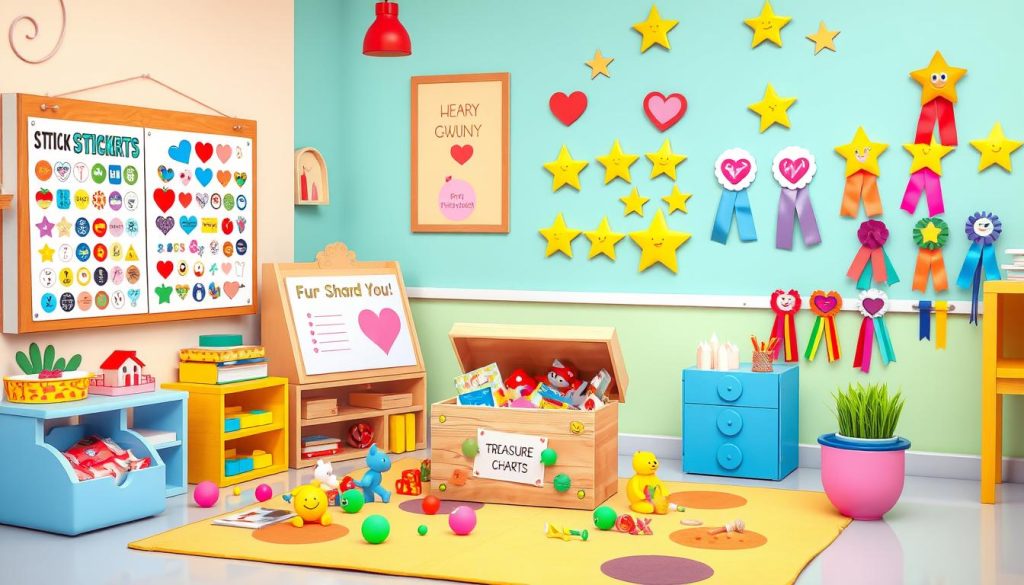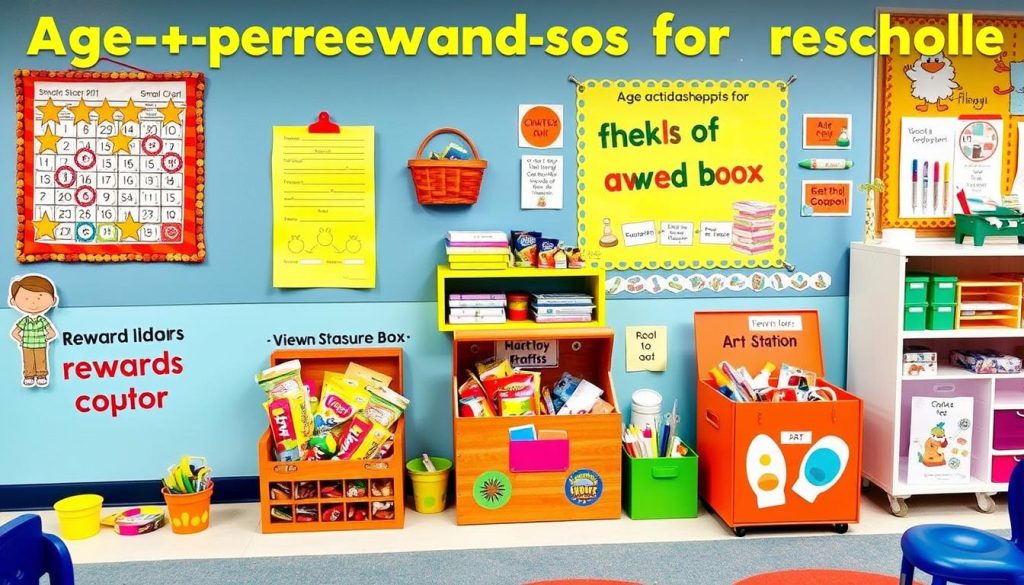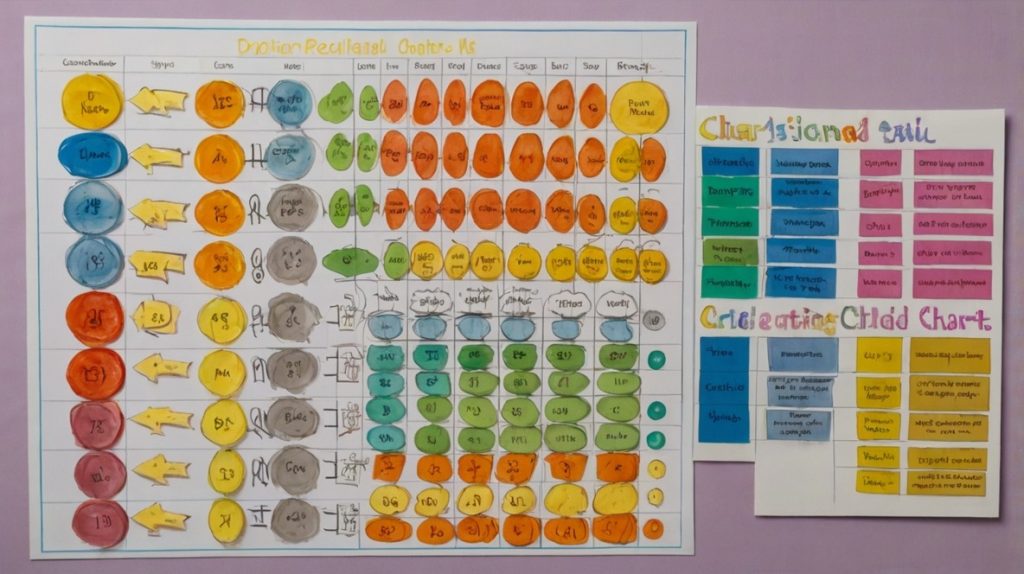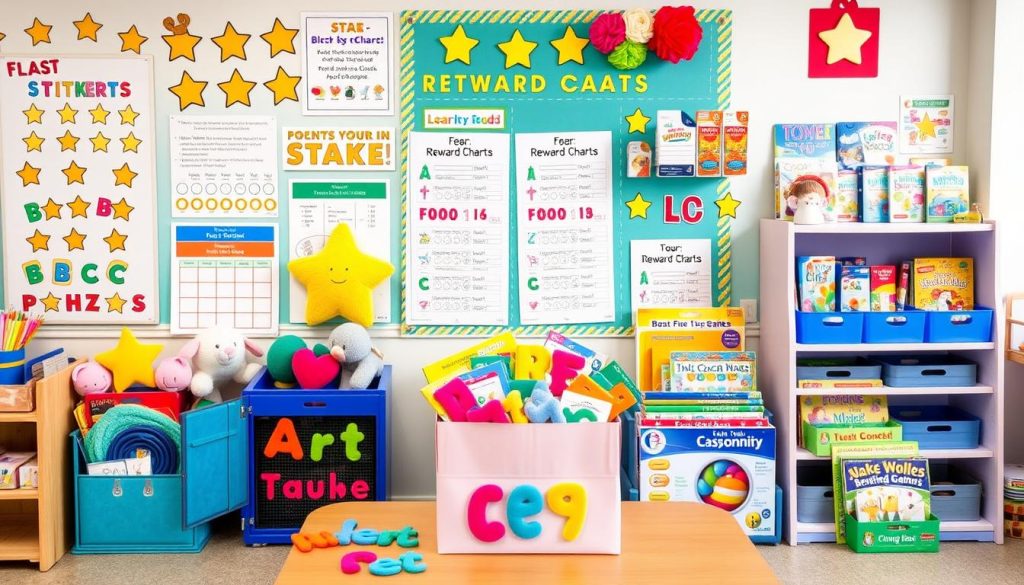
As a mom, I know how challenging it can be to encourage our little ones to follow routines, tackle their chores, or simply make good choices. Sometimes, it feels like we’re juggling a million things, and getting our preschoolers to stay on track can be a task all on its own. That’s where reward ideas come in—fun, simple ways to motivate our kids while also teaching them valuable lessons about responsibility and good behavior.
I’ve found that a positive behavior chart or a creative reward system can make a world of difference. Whether it’s using colorful chore charts, playful classroom incentives, or adorable at-home behavior rewards, preschoolers respond so well to a little recognition for their efforts. And the best part? You don’t have to spend a fortune or overthink it.
In this post, I’ll share some easy and fun ideas that work wonders for motivating preschoolers. From small behavior incentives to creative chore rewards, there’s something for every busy mom looking for ways to inspire her little ones. Let’s dive in and make this whole parenting thing just a bit easier, shall we?
Key Takeaways
- Reward ideas can motivate preschoolers to learn and grow
- Positive reinforcement is essential for encouraging good behavior
- Reward systems can be tailored to individual children’s needs and interests
- Non-material rewards, such as praise and attention, can be just as effective as tangible rewards
- Implementing a reward system can help avoid emotional blackmail and entitlement issues
- Reward ideas can range from simple gestures to more tangible rewards, such as activities or privileges
- Long-term rewards, like collections and activities with parents, can have a lasting impact on a child’s motivation and behavior
Understanding the Psychology Behind Rewarding Preschoolers
As moms, we’ve all been there—trying to figure out what really motivates our little ones. Why does one child light up at the promise of a sticker on a reward chart, while another couldn’t care less? Understanding the psychology behind rewarding preschoolers is like uncovering a little secret weapon for parenting.
Preschoolers are at a stage where they’re learning about cause and effect. When they do something positive and receive a reward, they start to connect the dots: good behavior brings good things. It’s not just about the prize—it’s about the recognition. They feel seen, appreciated, and encouraged to keep up the good work.
But here’s the catch: the type of reward matters. For example, when we use something like a positive behavior chart or a fun chore chart tailored to their age, it creates structure and consistency. Preschoolers thrive on predictability. If they know their good behavior will lead to a fun sticker, a small toy, or even a simple “high-five” from Mom, it builds their confidence and motivation.
It’s also important to make rewards meaningful but not over-the-top. We don’t want to create little ones who expect a grand prize for every task, right? Instead, small gestures like reading reward ideas, a turn picking the next family activity, or even earning Monopoly money chore chart rewards can keep things fun without overloading them.
Rewards also teach valuable life lessons. When kids work towards something, they learn patience, responsibility, and the joy of achieving goals. For instance, using a behavior chart for kids at home helps them understand that sharing toys, cleaning up, or using kind words aren’t just chores—they’re stepping stones to becoming awesome little humans.
At the end of the day, it’s all about balance. Rewards aren’t just bribes; they’re tools to reinforce positive behavior and guide our kids toward good habits. And honestly, who doesn’t feel a little proud seeing those shiny stickers fill up the chart?
The Role of Positive Reinforcement
Let’s talk about a parenting secret that works like magic: positive reinforcement. As moms, we often focus on what we don’t want our kids to do—“Don’t throw your toys,” “Don’t jump on the couch,” “Don’t eat that crayon!” But what if we flipped the script and focused more on what we do want them to do? That’s where positive reinforcement comes in, and trust me, it’s a game-changer.
Positive reinforcement is all about recognizing and rewarding good behavior. When we catch our kids doing something right and celebrate it, we encourage them to repeat that behavior. Preschoolers, in particular, crave attention and approval, so something as simple as a high-five, a warm smile, or a colorful sticker on their reward chart for kids can work wonders.
What’s great about positive reinforcement is that it builds confidence. Kids feel proud when they see their efforts recognized. It can be as simple as offering chore rewards for completing daily tasks like setting the table or brushing their teeth. These rewards don’t have to be extravagant. Sometimes, letting them choose a fun activity, like baking cookies together, or earning an extra story at bedtime is enough to light up their day.
Another thing I love about positive reinforcement is that it helps strengthen the bond between us and our kids. When we focus on their good behavior and encourage them with incentive charts or home behavior rewards, we create an environment where they feel supported and valued. And honestly, isn’t that what every little one needs to thrive?
The Importance of Age-Appropriate Reward Systems
Exploring reward ideas for kids shows how key age-appropriate systems are. For preschoolers, a reward system that fits their age is vital. It makes learning fun and encourages good behavior.
Custom rewards work best when they match the child’s age and interests. Toddlers and preschoolers like simple charts with pictures. Older kids might enjoy points for bigger rewards. 
Using the right rewards helps kids behave better. It also stops them from putting things off. A good reward system boosts self-esteem and positive behavior in kids.
Effective Reward Ideas for Kids in Preschool Stage
Finding the right Reward Ideas for kids can be tough. It’s even harder when you think about different places. As a parent, it’s key to have many reward ideas for all kinds of situations, like Home-Based Rewards.
Research shows 70% of rewards are activities, not things. This shows how important it is to give rewards that are fun to do.
1. Sticker Charts
Sticker charts are one of the go-to reward systems for preschoolers—they’re easy, fun, and highly effective. Kids love picking out bright, colorful stickers to place on their charts.
You can tailor the theme to match your child’s interests, like animals, princesses, or superheroes, to make it even more exciting. Each sticker feels like a mini celebration of their effort. Whether it’s for completing chores, sharing toys, or following rules, sticker charts visually show progress, which is super motivating for little ones.
Plus, they give you an opportunity to talk about their successes, reinforcing positive behavior. It’s simple, yet so rewarding!
2. Special Activity Time
One of the best rewards for preschoolers is uninterrupted time doing something they love. Whether it’s building a block tower, finger painting, or baking cupcakes together, this special one-on-one time is invaluable.
I often promise my kid 10–15 extra minutes of their favorite activity when they meet a goal on their behavior chart for kids. It’s a win-win because they feel rewarded while I get to bond with them. It’s amazing how such a small gesture can light up their day.
Bonus: these moments create lasting memories and teach kids that good behavior leads to quality time with family.
3. Fun Coupons
Who doesn’t love a good coupon? Preschoolers especially enjoy redeeming fun, personalized ones! I make simple DIY coupons for things like “Choose the next movie,” “Skip one chore,” or “One Pajama Day.” You can even involve your child in creating the coupons, making them colorful and fun.
These rewards are easy to customize to fit your child’s personality and interests. Handing over a coupon feels like a big deal to preschoolers, and they love the independence of deciding when to use it.
It’s a creative way to incentivize behavior while giving them something tangible to look forward to.
4. Mystery Box Prizes
There’s something magical about a mystery, isn’t there? I keep a small box filled with inexpensive goodies like stickers, mini toys, or crayons. When my preschooler earns enough points on their positive behavior chart, they get to pick a prize without knowing what’s inside.
The element of surprise makes it so exciting! You don’t have to spend a fortune—think dollar store finds or even homemade treats like a little bag of cookies.
The mystery box adds an extra layer of fun to rewards, and kids love working toward the chance to grab something special from it.
5. Theme Days
One of my favorite rewards is declaring a theme day! Whether it’s “Superhero Day” or “Dress-Up Day,” preschoolers absolutely love the chance to play pretend all day long.
You can tie it to their good behavior by letting them “unlock” the theme once they fill a row on their reward chart for kids. We’ve had so much fun turning regular days into magical ones with costumes, activities, and themed snacks.
For example, on “Superhero Day,” you can make capes out of old T-shirts and pretended to save the world. It’s a reward that sparks creativity and creates amazing memories.
6. Extra Storytime
Bedtime stories are a cherished routine in our home, and adding an extra book to the lineup is always a big hit. When my kids complete a task or reach a milestone on their behavior chart for the home, I let them pick an additional story for us to read together.
Sometimes I make it even more special by letting them pick a book from the library or adding silly voices to the characters. Reading rewards like this are simple, calming, and a perfect way to end the day on a positive note while reinforcing their good behavior.
7. Mini Treasure Hunt
If you’ve never tried a mini treasure hunt as a reward, you’re in for a treat—it’s as fun for us moms as it is for the kids! I hide small prizes or tokens around the house and create simple clues for my preschooler to follow.
It might be something as small as a pack of stickers or a new crayon set, but the thrill of the hunt makes it feel so special. Preschoolers love the adventure, and it’s a great way to reward them for completing tasks or showing good behavior. Plus, it keeps them entertained for a good chunk of time!
8. Craft Supplies or DIY Kits
If your preschooler is into arts and crafts like mine, then rewarding them with new supplies is a no-brainer. Crayons, stickers, or even a small DIY craft kit can spark their creativity and keep them happily engaged. I often use this as a reward for filling their chore chart for kids.
It’s also a great opportunity for us to sit down and create something together—whether it’s decorating cards or making a simple craft project. These rewards are not only fun but also encourage creativity and hands-on learning, making them a double win in my book.
9. Baking Day with Mom
Almost every mom love baking, and so do kids, which makes a baking day one of the favorite rewards! When preschoolers completes their behavior chart at home, let them pick a treat for us to make together—cookies, cupcakes, or even homemade pizza.
They get to mix, pour, and decorate, which makes them feel like they’re part of something special. Plus, we both get to enjoy the delicious results afterward.
It’s a reward that’s as much about the experience as it is about the treat. And honestly, who doesn’t love the smell of fresh-baked cookies?
10. “Special Helper” Badge
Preschoolers love feeling important, so I created a “Special Helper” badge as a reward. When they’ve demonstrated positive behavior, they get to wear the badge and take on fun responsibilities, like helping set the table or being in charge of handing out napkins during snack time.
This reward works wonders because it taps into their natural desire to feel grown-up and needed. Plus, it teaches them responsibility in a way that feels fun and empowering.
A simple badge or certificate can mean the world to a preschooler, and it’s a great way to encourage good behavior in everyday tasks.
Creating a Balanced Reward Chart System

A well-designed reward chart for kids can be a game-changer in encouraging positive behavior and developmental milestones in preschoolers. However, the key is finding the right balance—too many rewards, and they lose their value; too few, and your little one might lose interest. Here’s how I create a balanced reward chart system that works for my family:
1. Set Clear Goals
Start by identifying the behaviors or tasks you want to encourage, like sharing toys, completing simple chores, or following a bedtime routine. These should be specific and achievable for your preschooler. For instance, “Pick up toys after playtime” is clearer than “Be tidy.”
2. Keep It Simple
Preschoolers thrive on simplicity. I use a straightforward positive behavior chart with space for stickers or checkmarks to track their progress. Keeping it uncluttered ensures your child understands what’s expected and feels motivated to participate.
3. Choose Age-Appropriate Rewards
The rewards should match your child’s age and interests. Preschoolers love small, tangible prizes like stickers, craft supplies, or extra playtime. For instance, completing a week’s worth of chores could earn a trip to the park or a fun baking session.
4. Make the Chart Fun and Visual
Use bright colors, fun themes, or even let your child decorate the chart. I’ve found that involving my kids in creating their chore rewards ideas boosts their excitement and ownership over the process.
5. Balance Short- and Long-Term Rewards
Include both quick wins and bigger goals. For example, your preschooler might earn a sticker each day for completing their chores and a mystery box prize after a full week of consistent effort. This keeps them motivated without feeling overwhelmed.
6. Be Consistent and Encouraging
Consistency is key. I make sure to follow through on rewards as promised and praise my child for their efforts, even if they don’t fully meet a goal. Positive reinforcement works wonders in building confidence and motivation.
7. Adjust as Needed
Every child is different, so don’t be afraid to tweak the system. If your child loses interest or finds the tasks too hard, adjust the goals or swap in fresh rewards. I revisit our behavior chart at home regularly to make sure it’s still working for us.
A balanced reward chart system is more than just a tool—it’s a way to teach your child about effort, responsibility, and the joy of achieving goals. With the right approach, it can be a fun and effective way to encourage good behavior while strengthening your bond with your preschooler.

Timing Your Rewards for Maximum Impact
When it comes to rewarding kids, timing is everything. I’ve learned that giving rewards at just the right moment can make all the difference in how well they respond to a reward system for kids. Preschoolers have short attention spans, so connecting the reward to their behavior quickly helps them understand what they’re being praised for.
1. Reward Immediately for Small Wins
For behaviors like sharing toys or following directions, I find that immediate rewards work best. A quick “You did such a great job cleaning up—here’s a sticker for your chart!” reinforces the connection between their action and the positive outcome. It’s amazing how a small acknowledgment can motivate them to keep up the good work.
2. Build Anticipation for Bigger Rewards
For longer-term goals, like filling up a behavior chart for kids, I make sure to keep the excitement alive. I remind my kids about what they’re working toward, like choosing a prize from the mystery box or earning a special baking day. It keeps them motivated while teaching patience and the value of delayed gratification.
3. Use Natural Breaks in Their Routine
Timing rewards during natural transitions, like after snack time or before bedtime, helps make the process smoother. For example, I’ll hand out stickers or checkmarks for completing chores right after they finish. It’s a seamless way to fit rewards into the day without disrupting their schedule.
4. Celebrate Milestones Along the Way
Sometimes, big goals can feel overwhelming for little ones. I like to break them into smaller steps and celebrate milestones as we go. For example, if the goal is to stay in bed all night, I might reward my child with a sticker each morning and a larger prize, like a fun coupon, after a full week of success.
5. Keep Rewards Predictable (But Fun!)
Preschoolers thrive on routine, so I make sure the timing of rewards is consistent. If they expect to earn a sticker for completing their daily chores, I deliver right after they’re done. At the same time, I sprinkle in surprises like extra storytime or a spontaneous treasure hunt to keep things exciting.
Transitioning Away from External Rewards
When we talk about rewarding preschoolers, we must think about the long-term effects. Extrinsic motivation can make kids rely too much on rewards. Alfie Kohn says rewards and punishments do the same thing: control behavior.
Daniel Pink’s research shows extrinsic rewards can stop kids from solving problems creatively. This shows why we should move away from rewards and build intrinsic motivation. This way, kids will really want to learn and behave well.
To help kids, we can use gradual reduction techniques. This means slowly giving fewer or less valuable rewards. It helps kids learn to motivate themselves and keep good habits. Sarah MacLaughlin says loving relationships with kids are key to good behavior and intrinsic motivation.
Conclusion
Building lasting positive behaviors in preschoolers is a delicate balance. It needs a thoughtful reward system. By understanding the psychology behind rewards, we can motivate our little ones.
Creating a balanced reward chart system is key. It should include different rewards, like educational ones and physical activity recognition. It’s also important to time rewards right, so they have the biggest impact without making kids too dependent.
Transitioning to intrinsic motivation is vital for lasting positive behaviors. This means helping kids find joy in doing things, not just for rewards.
Remember, smart rewarding is not about bribing or manipulating. It’s about making kids feel valued and motivated to do their best. By following these tips, you can help your preschooler love learning, be self-disciplined, and have a positive outlook on life.
- https://www.montessoriinreallife.com/home/2020/2/1/valentines-day-activities-for-toddlers
- https://littlebinsforlittlehands.com/valentines-day-science-stem-activities-kids/
- https://happytoddlerplaytime.com/25-amazing-valentines-activities-for-toddlers/
- https://littlemontessorihouse.net/2019/01/30/valentines-day-activities-and-art-for-preschool/
- https://parentapp.ca/blog/valentines-day-activities-for-kids




